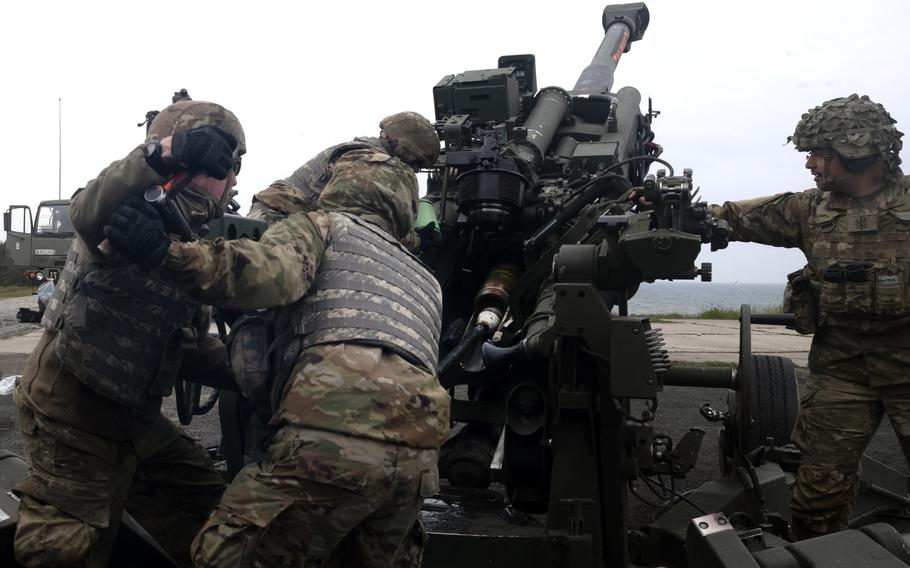
Air Force reservists of the 911th Aeromedical Evacuation Squadron take a group photo after an exercise at Leuchars Station, Scotland, in June 2024. (Timothy Leddick/U.S. Air Force)
The dozens of Pentagon duty codes for National Guard members and reservists cause confusion and should be slashed to just four, according to a new Defense Department-commissioned report.
The change would make pay and benefits more predictable for reserve component service members, improve budgetary planning and encourage volunteerism, according to the Rand Corp. report released Tuesday.
“The system’s complexity and inflexibility prevent National Guard and Reserve members from being used in an optimal way,” researchers said.
As Guard members and reservists move to different types of duty assignments, pay and benefits often change and may be delayed, according to the report.
There are currently 29 involuntary and voluntary status distinctions under 27 different sections of federal law, covering mobilization orders, training drills, funeral honors, sexual assault response and other duties.

Illinois Army National Guard soldiers load a shell into the breach of an M777 howitzer during an exercise in Ustka, Poland, in May 2024. The Pentagon should overhaul its duty status system for Guard members and reservists to reduce confusion and better standardize pay and benefits, according to a Rand Corp. report released Aug. 12, 2025. (Jon Soucy/U.S. Army)
Rand recommended reducing these to four categories: contingency duty, training and support, reserve component duty and remote assignments.
Having a wide array of duties under broad categories would make it easier to bounce between jobs, making volunteerism more likely, the report said.
Efforts to reform the duty status system stretch back to 2002 but gained momentum after a 2015 helicopter crash in the the Gulf of Mexico that killed four guardsmen and seven Marines.
The guardsmen’s families received “considerably less” in survivor payments because the soldiers were designated for inactive duty training that day.
The issue was fixed in a later defense bill, but broader inconsistencies remain, the report said.
Congress instructed DOD in the 2016 National Defense Authorization Act to study the issue, and Rand was brought in to assist a DOD working group.
Besides consolidating duty categories, the report recommended aligning order-writing, accounting and compensation systems across the military services. DOD must then ensure complete adoption across the services and overcome resistance to reverting to the old system, it said.
Adopting the recommendations would save an estimated $68.8 million in fiscal 2018 dollars annually and $344.1 million over five years under the Future Years Defense Program, the report said.